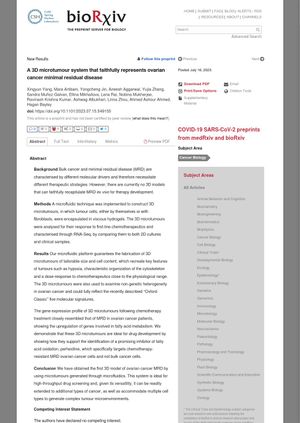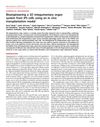A 3D Microtumour System That Faithfully Represents Ovarian Cancer Minimal Residual Disease
July 2023
in “
bioRxiv (Cold Spring Harbor Laboratory)
”

TLDR The study developed a 3D model that closely imitates remaining ovarian cancer after treatment and identified a potential drug targeting resistant cancer cells.
The study presents a 3D model of ovarian cancer minimal residual disease (MRD) using microtumours generated through microfluidics. The microfluidic platform allows for the creation of 3D microtumours of customizable size and cell content, which mimic key features of tumours such as hypoxia, cytoskeleton organization, and a physiological range dose-response to chemotherapeutics. The 3D microtumours were used to examine non-genetic heterogeneity in ovarian cancer and could fully reflect the "Oxford Classic" five molecular signatures. The gene expression profile of 3D microtumours following chemotherapy treatment closely resembled that of MRD in ovarian cancer patients, showing the upregulation of genes involved in fatty acid metabolism. The study also identified a promising inhibitor of fatty acid oxidation, perhexiline, which specifically targets chemotherapy-resistant MRD ovarian cancer cells and not bulk cancer cells. This system is ideal for high-throughput drug screening and can be extended to additional types of cancer.

